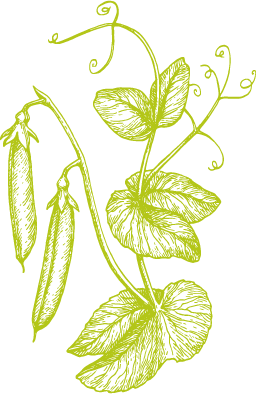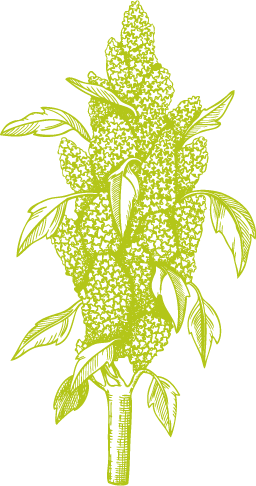
Successor Wanted
The lack of a successor is often a reason why businesses have to close their doors. But now some new solutions are on hand.
Read more




More than 60 percent of worldwide plant-based calories are derived from wheat, corn, and rice. But there is a lot happening outside of the big three agricultural crops: In particular, plant proteins for human nutrition are in demand. And although the journey from research through to the food industry is a long one, the diversity of agricultural crops provides a near perfect alternative to animal products. Here are four examples that could have a bright future.
ALGAE
If arable land becomes scarce, algae could come in useful. After all, they can be grown in the sea. Their carbon footprint is smaller than rice, and types such as nori are protein-rich and contain vitamin B12, which otherwise is found almost exclusively in animal products. The fat content of algae is virtually zero, and they offer a plethora of alternative uses, including making beef more sustainable: Researchers at the University of California mixed small quantities of a red type of algae into the feed of Angus and Hereford cattle for an extended period. The result: the algae reduced the ruminants’ methane emissions by 80 percent.


AMARANTH
This pseudocereal, which is around 8,000 years old, is grown in Asia, Latin America, and Africa. Since it was rediscovered in the 1980s, a large number of new varieties have emerged. From a nutritional perspective, it has a very high protein content of 16 to 18 percent. Amaranth is usually puffed like rice or used as flour. Europeans like to put it in Muesli. The easy-to-grow plant is harvested between late August and late September using conventional combine harvesting technology.
PEAS
Many plant researchers think peas are underestimated – along with other legumes, such as lentils, beans, and chickpeas. Why? Demand for them from the food industry is still not strong enough. But the boom in meat substitutes could change that. In addition, legumes are regarded as an important contributor to greater biodiversity in fields, which is called for by the EU. They should account for up to 15 percent of total cultivated crops per year. The advantage of doing this: these plants retain a great deal of nitrogen, do not require any fertilizer, and thus reduce emissions of the greenhouse gas nitrous oxide.


QUINOA
Still a niche product, quinoa is nevertheless a superfood. Its nutritional benefits include a very high protein content of around 15 percent and lots of essential amino acids. This plant has been grown in South America for thousands of years and is becoming more popular in Central Europe. Small cultivation projects are underway in Germany, for example. Thanks to the University of Kiel and others, the quinoa genome was also completely sequenced in 2017, revealing genes that are important from a breeding perspective. As far as cultivation is concerned, quinoa can be used at any point in crop rotation, and while combine harvesting the grains is challenging due to their tiny size, it is certainly possible.